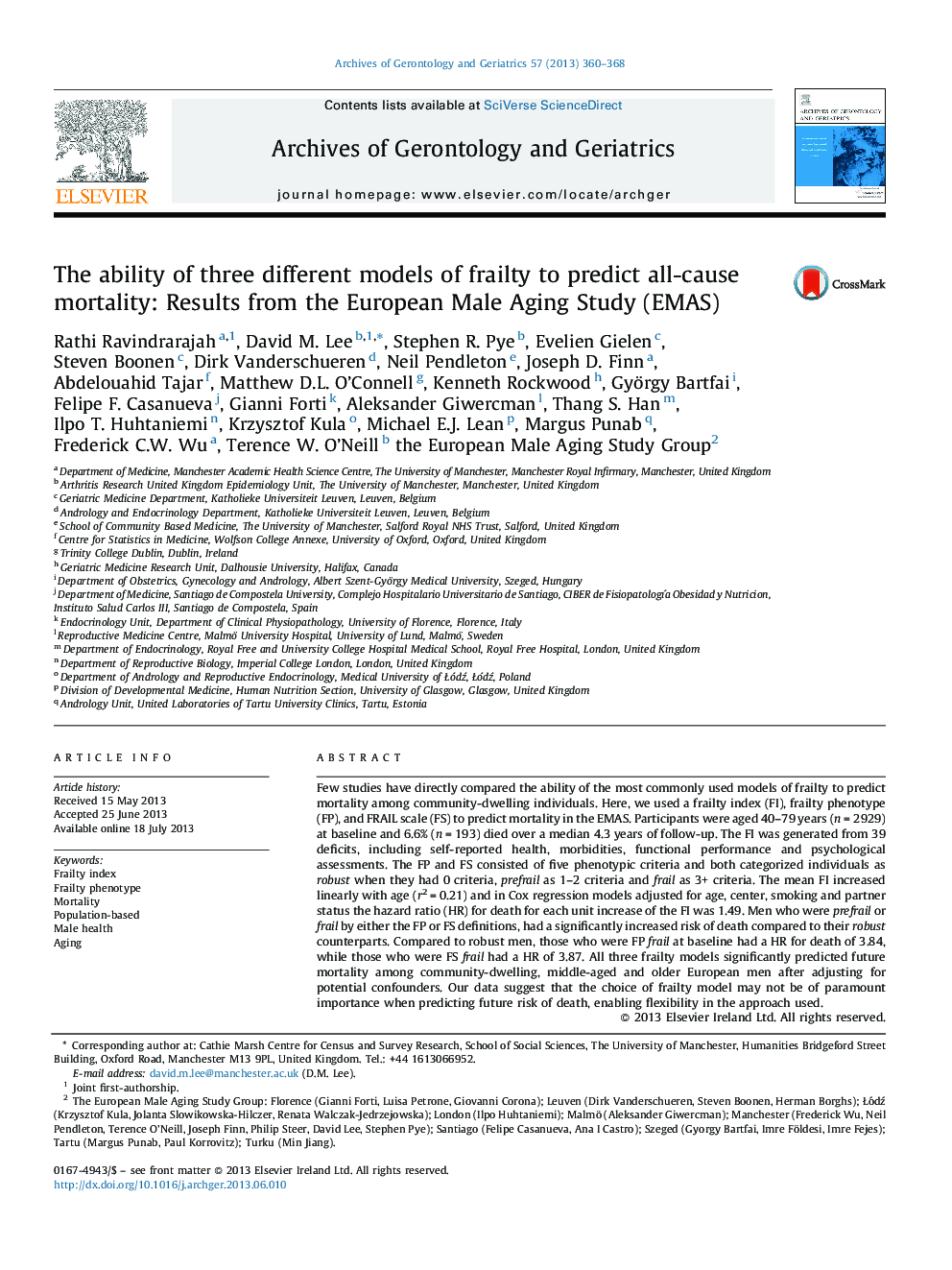| Article ID | Journal | Published Year | Pages | File Type |
|---|---|---|---|---|
| 1903220 | Archives of Gerontology and Geriatrics | 2013 | 9 Pages |
Few studies have directly compared the ability of the most commonly used models of frailty to predict mortality among community-dwelling individuals. Here, we used a frailty index (FI), frailty phenotype (FP), and FRAIL scale (FS) to predict mortality in the EMAS. Participants were aged 40–79 years (n = 2929) at baseline and 6.6% (n = 193) died over a median 4.3 years of follow-up. The FI was generated from 39 deficits, including self-reported health, morbidities, functional performance and psychological assessments. The FP and FS consisted of five phenotypic criteria and both categorized individuals as robust when they had 0 criteria, prefrail as 1–2 criteria and frail as 3+ criteria. The mean FI increased linearly with age (r2 = 0.21) and in Cox regression models adjusted for age, center, smoking and partner status the hazard ratio (HR) for death for each unit increase of the FI was 1.49. Men who were prefrail or frail by either the FP or FS definitions, had a significantly increased risk of death compared to their robust counterparts. Compared to robust men, those who were FP frail at baseline had a HR for death of 3.84, while those who were FS frail had a HR of 3.87. All three frailty models significantly predicted future mortality among community-dwelling, middle-aged and older European men after adjusting for potential confounders. Our data suggest that the choice of frailty model may not be of paramount importance when predicting future risk of death, enabling flexibility in the approach used.
